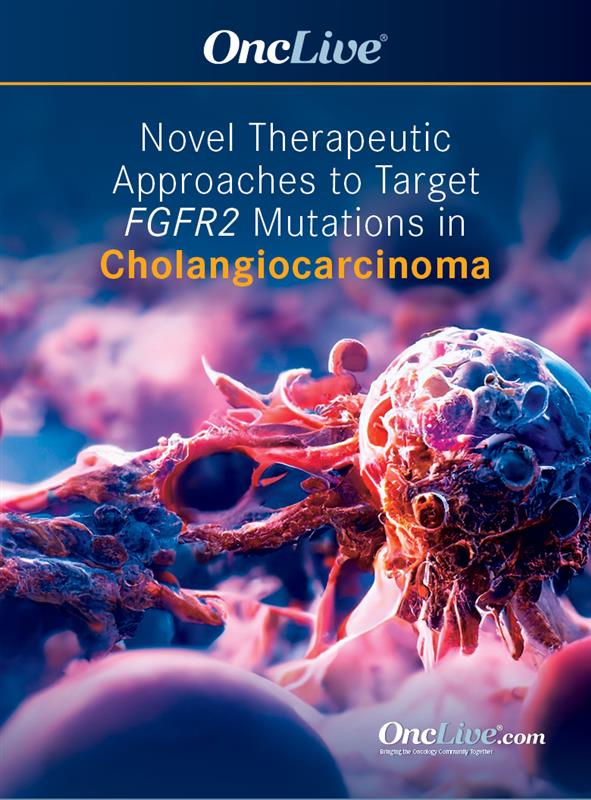Publication
Video
Supplements and Featured Publications
Dr Harding on the Rationale for Targeting FGFR2 in Cholangiocarcinoma and Biliary Tract Cancers
Author(s):
James Harding, MD, discusses the rationale for targeting FGFR2 in patients with cholangiocarcinoma and biliary tract cancers.
James Harding, MD, assistant attending physician, Memorial Sloan Kettering Cancer Center, discusses the rationale for targeting FGFR2 in patients with cholangiocarcinoma and biliary tract cancers.
In the phase 1/2 REFOCUS trial (NCT04526106), investigators evaluating the safety, tolerability, pharmacokinetics, pharmacodynamics, and antineoplastic activity of the selective FGFR2 inhibitor RLY-4008. Preliminary data presented at the 2022 ESMO Congress showed RLY-4008 produced an overall response rate of 88.2% in patients with FGFR inhibitor–naïve cholangiocarcinoma who had an FGFR2 fusion or rearrangement (n = 17).
Biliary tract cancers consist of 3 subtypes: intrahepatic cholangiocarcinoma, extrahepatic cholangiocarcinoma, and gallbladder adenocarcinoma. In patients with intrahepatic cholangiocarcinoma, a subset of patients has tumors driven by aberrant signaling from the FGFR2 pathway, Harding explains. This signaling could occur as overexpression or amplification of FGFR2, as specific FGFR2 point mutations, or with FGFR2 structural rearrangements or fusions.
Approximately 5% to 15% of patients with intrahepatic cholangiocarcinoma harbor FGFR2 fusions or rearrangements, Harding continues. Next-generation sequencing is used to detect these fusions or rearrangements, and this testing allows eligible patients to be considered for targeted therapy with an FGFR2 inhibitor. Previously developed and approved FGFR2 inhibitors have delivered promising response rates and durable disease control for this subset of patients, Harding says.
Although it remains unclear if FGFR2 amplifications or single-nucleotide variants are actionable targets in cholangiocarcinoma, patients with FGFR2 fusion– or rearrangement–positive cholangiocarcinoma stand to benefit for FGFR2 inhibition, Harding concludes.










